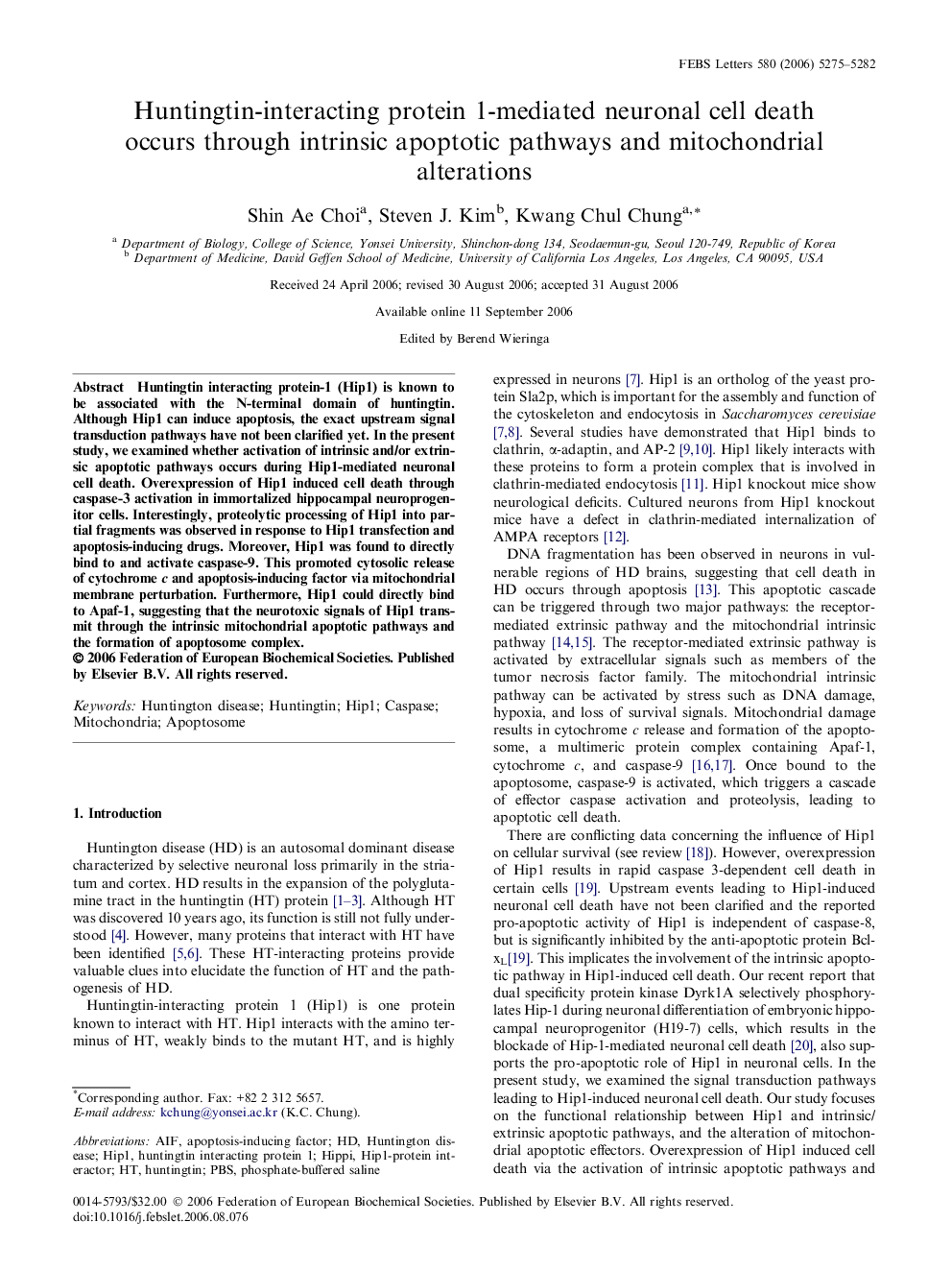| Article ID | Journal | Published Year | Pages | File Type |
|---|---|---|---|---|
| 2051039 | FEBS Letters | 2006 | 8 Pages |
Huntingtin interacting protein-1 (Hip1) is known to be associated with the N-terminal domain of huntingtin. Although Hip1 can induce apoptosis, the exact upstream signal transduction pathways have not been clarified yet. In the present study, we examined whether activation of intrinsic and/or extrinsic apoptotic pathways occurs during Hip1-mediated neuronal cell death. Overexpression of Hip1 induced cell death through caspase-3 activation in immortalized hippocampal neuroprogenitor cells. Interestingly, proteolytic processing of Hip1 into partial fragments was observed in response to Hip1 transfection and apoptosis-inducing drugs. Moreover, Hip1 was found to directly bind to and activate caspase-9. This promoted cytosolic release of cytochrome c and apoptosis-inducing factor via mitochondrial membrane perturbation. Furthermore, Hip1 could directly bind to Apaf-1, suggesting that the neurotoxic signals of Hip1 transmit through the intrinsic mitochondrial apoptotic pathways and the formation of apoptosome complex.
